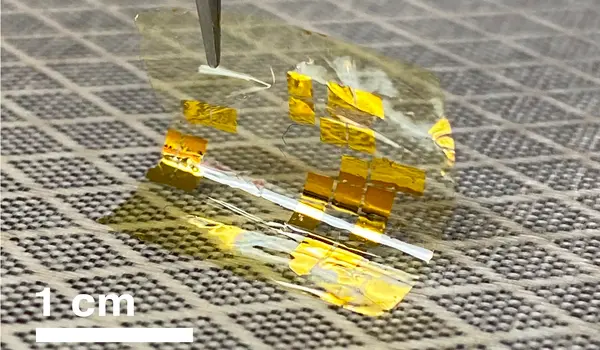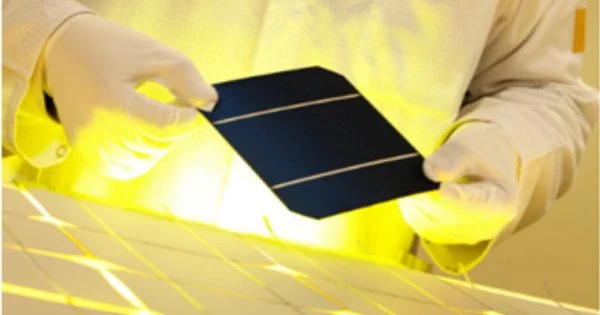A team of researchers has successfully increased the amount of energy absorbed by wafer-thin photovoltaic panels by 25%. Their solar panels, which are only one micrometer thick, convert light into electricity more efficiently than others of the same thickness, paving the way for more clean, green energy to be widely distributed.
According to a recent study published in the journal Joule, a team of researchers at the US Department of Energy’s National Renewable Energy Laboratory (NREL) created a solar cell with a record efficiency of 39.5 percent under 1-sun global illumination, breaking the world record for solar cell efficiency.
The University of Surrey-led team successfully increased the amount of energy absorbed by wafer-thin photovoltaic panels by 25%. Their solar panels, which are only one micrometre thick (1m), convert light into electricity more efficiently than others of the same thickness and pave the way for more clean, green energy to be widely distributed.
The use of ultra-thin photovoltaics has enormous potential. For example, because they are so light, they will be especially useful in space and may make new extra-terrestrial projects feasible. We hope that because they use so much less silicon, there will be cost savings here on Earth, as well as the potential to bring more benefits from the Internet of Things and to create zero-energy buildings powered locally.
Dr Marian Florescu
The team describes how they used sunlight characteristics to design a disordered honeycomb layer that sits on top of a silicon wafer in a paper published in the American Chemical Society’s Photonics journal. Their approach is mirrored in the design of butterfly wings and bird eyes in nature.
According to Dr Marian Florescu of the University of Surrey’s Advanced Technology Institute (ATI), “One of the difficulties in working with silicon is that nearly one-third of the light bounces off without being absorbed and the energy harnessed. A textured layer across the silicon aids in this, and our disordered yet hyperuniform honeycomb design is particularly effective.”
The University of Surrey and Imperial College London researchers collaborated with experimental collaborators at AMOLF in Amsterdam to design, model, and fabricate the new ultra-thin photovoltaic.

According to a press release, the record was set under sun-like lighting conditions. While previous experiments with solar cells achieved efficiencies of up to 47.1 percent, it is important to note that they did so under extremely concentrated light. In fact, researchers used multi-junction concentrator solar cells developed at the National Renewable Energy Laboratory to set a new world record for solar cell efficiency of 47.1 percent in 2019.
They achieved absorption rates of 26.3 mA/cm2 in the laboratory, a 25% increase over the previous record of 19.72 mA/cm2 in 2017. They achieved a 21 percent efficiency, but expect further improvements to push the figure higher, resulting in efficiencies that are significantly higher than many commercially available photovoltaics.
Dr. Florescu went on, “The use of ultra-thin photovoltaics has enormous potential. For example, because they are so light, they will be especially useful in space and may make new extra-terrestrial projects feasible. We hope that because they use so much less silicon, there will be cost savings here on Earth, as well as the potential to bring more benefits from the Internet of Things and to create zero-energy buildings powered locally.”
The findings could benefit other industries where light management and surface engineering are important, such as photo-electrochemistry, solid-state light emission, and photodetectors, in addition to solar power generation.
The novel solar cell is based on the inverted metamorphic multijunction (IMM) cell architecture. Three components of the cell generate electric current in response to light. Importantly, each of those junctions is made of a different material: gallium indium phosphide at the top, gallium arsenide in the middle, and gallium indium arsenide at the bottom. Because these materials specialize in different light wavelengths, the cell can capture more energy from the entire light spectrum. The team’s next steps will be to look for commercial partners and to develop manufacturing techniques.
















